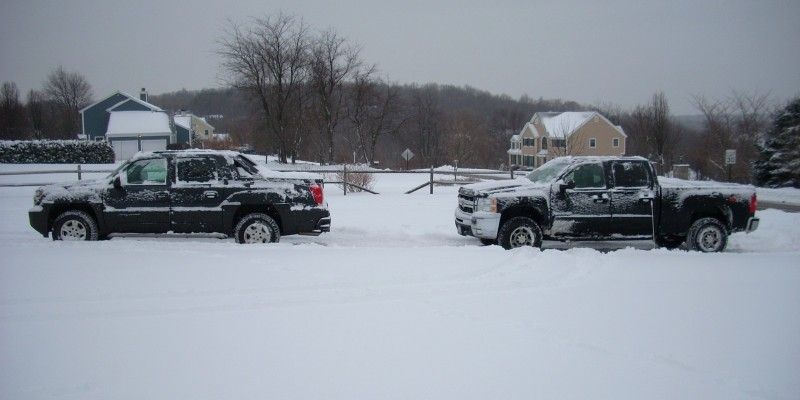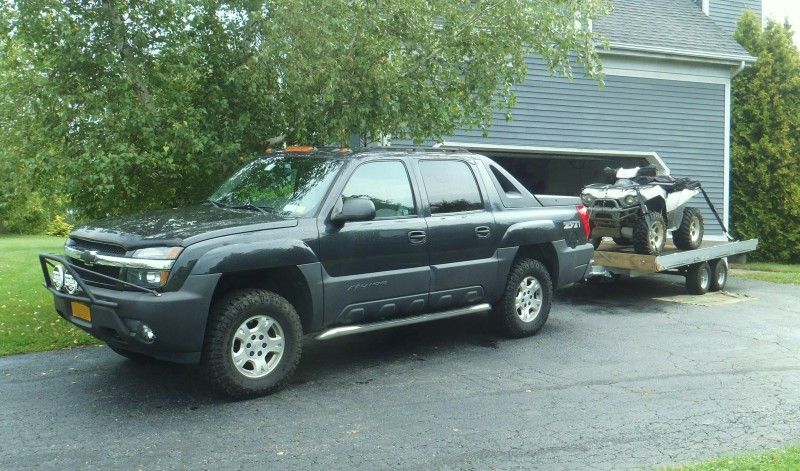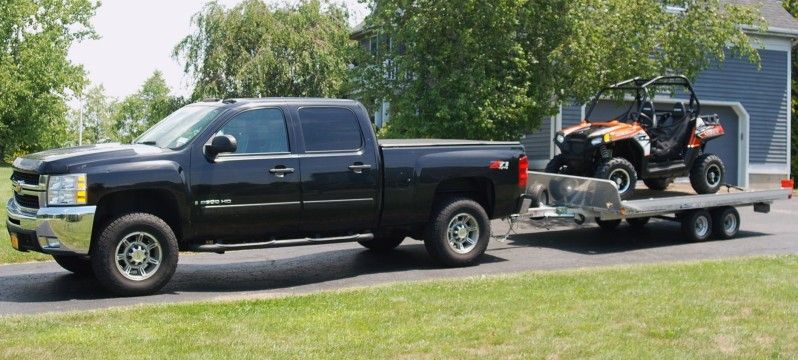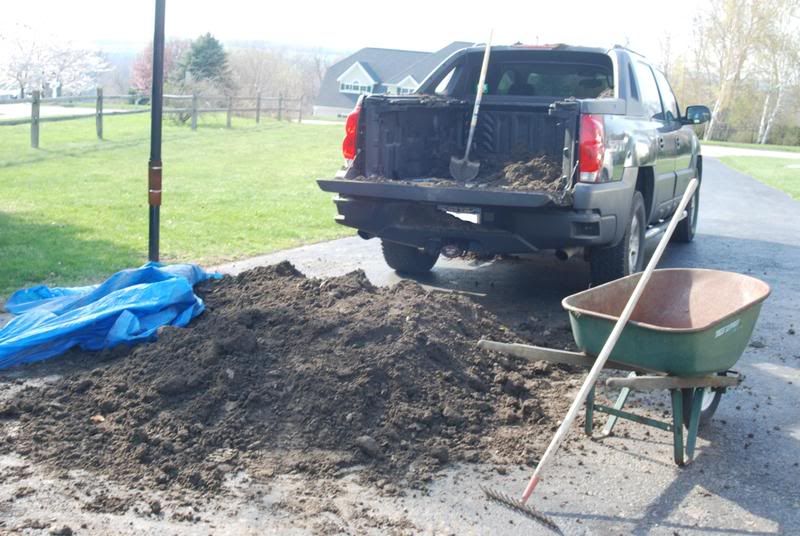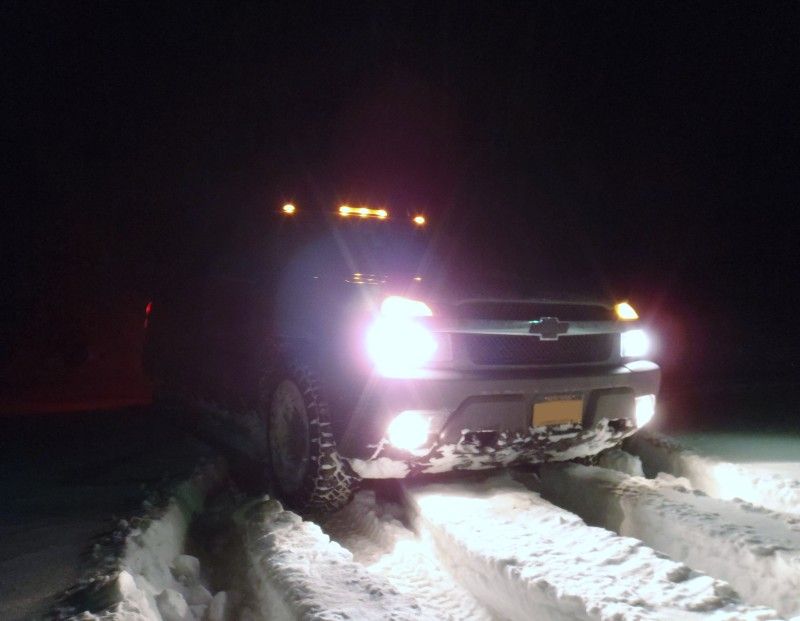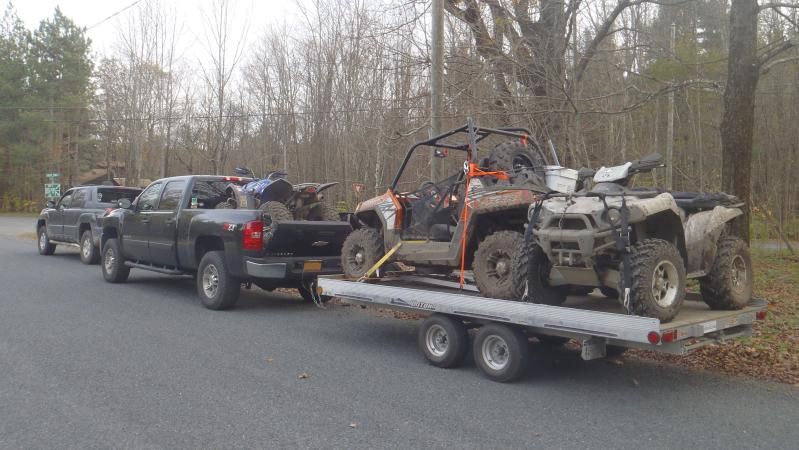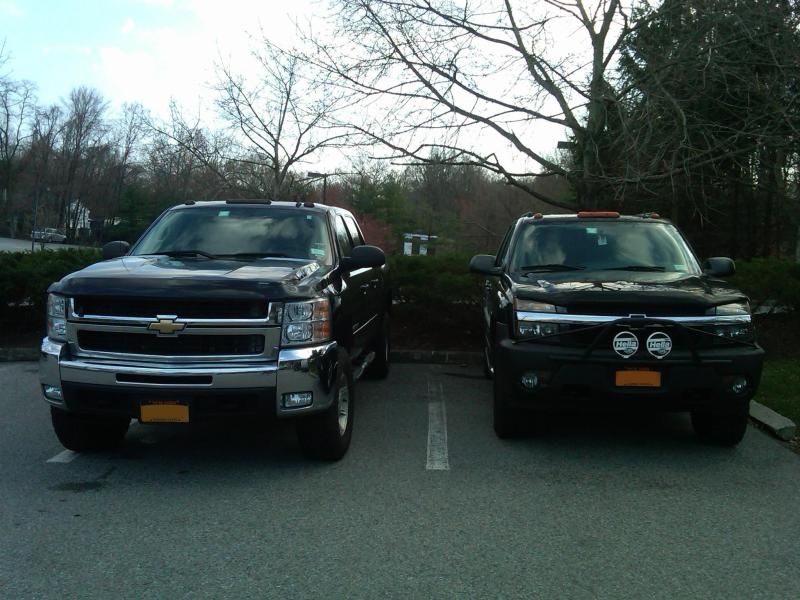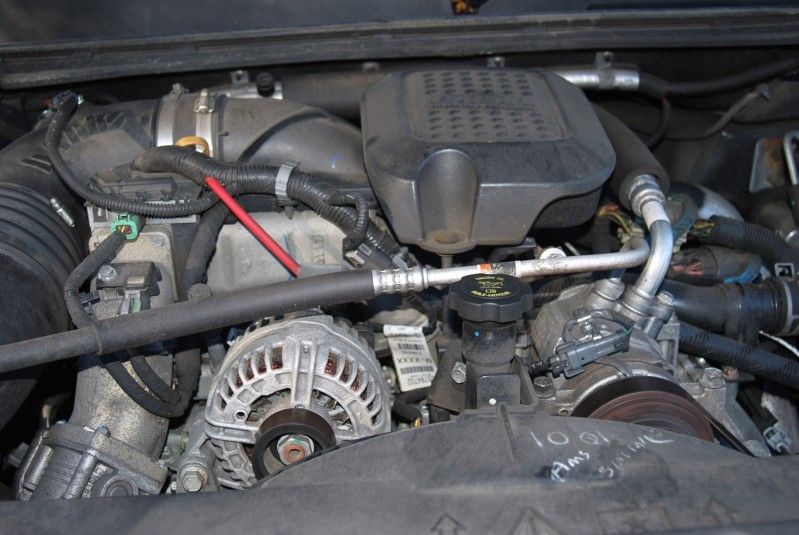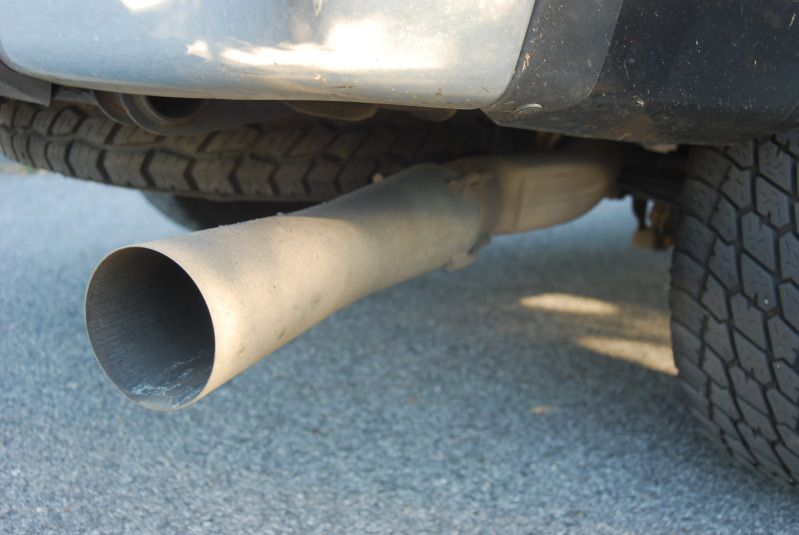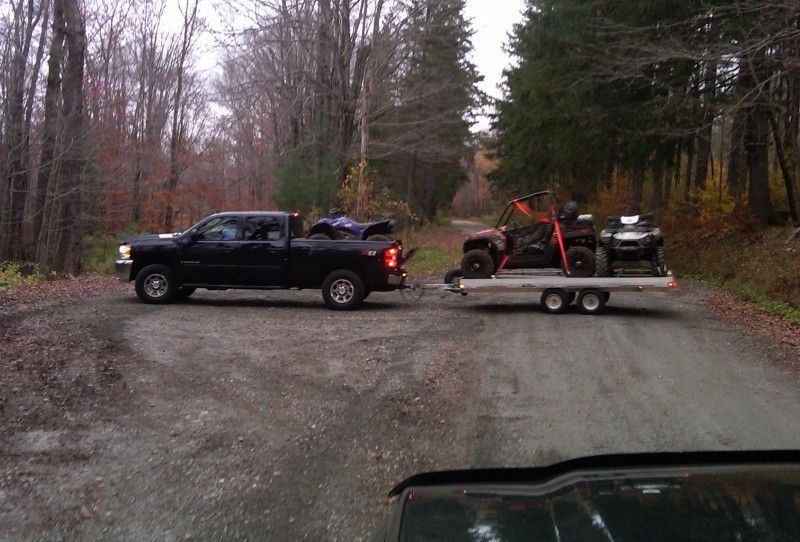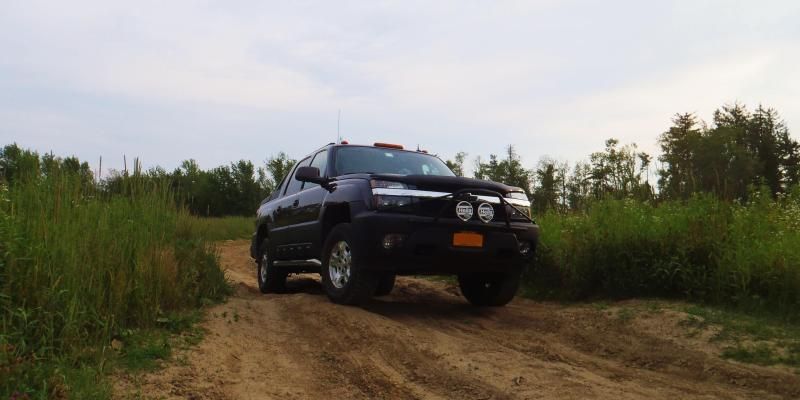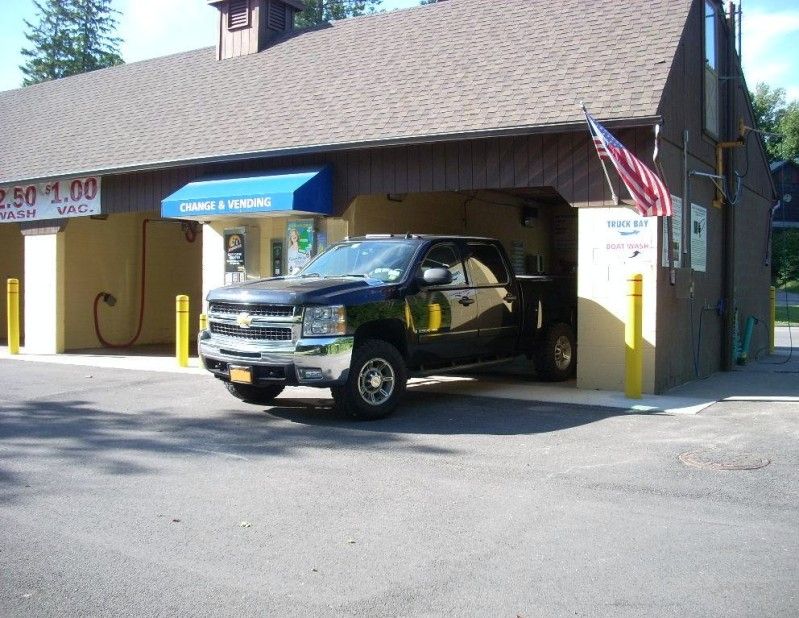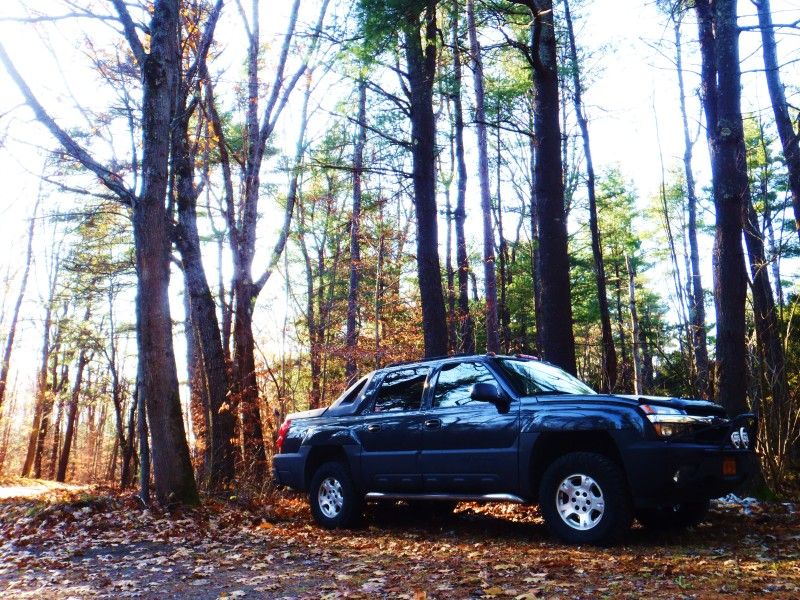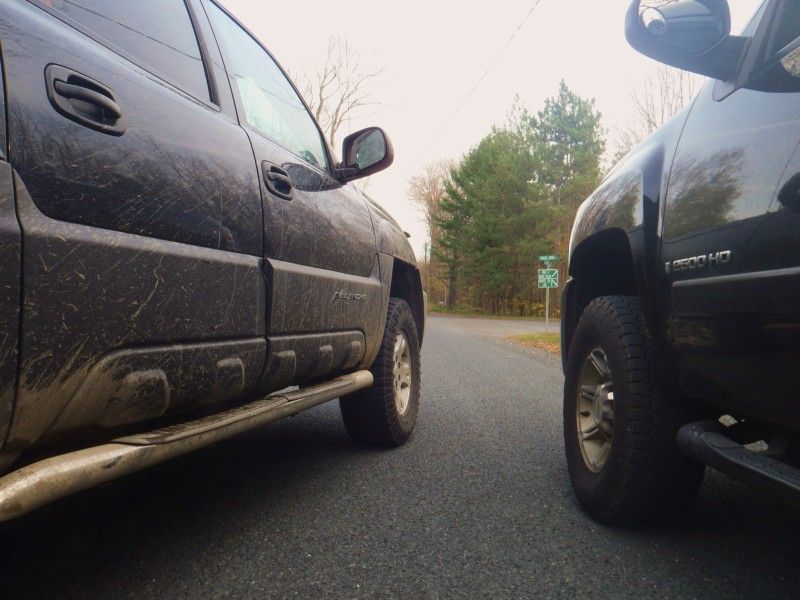Think of somebody you know who has never turned a wrench. If you give them a job that starts with choosing the appropriate tool, do they know where to start? Doubtful, at best. Now think of somebody you know who has zero knowledge of pickup trucks; would the situation be any different if you told them to walk into a Chevrolet dealership and, unassisted, choose the right truck for the job you assign them? Not a chance in the world. But the people who know that pickups are more than a one-breed species also know that there are different options for different jobs and different lifestyles. A carpenter wouldn't use a paint brush when he needs a nail gun, would he? Luckily, Chevrolet's toolbox was assembled by somebody who is fluent in the language of Truck.
Let's call the Chevrolet Avalanche a Swiss Army Knife and the Silverado HD a sledgehammer. Both are tools, each serving a completely different purpose. But first let me be completely clear: this is not a comparison to see which is the better vehicle. Picking a winner would make about as much sense as comparing a chainsaw and a 100-piece Craftsman set. Rather, this is about illustrating how two stablemates bearing the same badge can be built for such different purposes, just as Craftsman sells do-it-all tools alongside purpose-driven implements.
Another note: the trucks in this "comparison" are by no means new. With 112,000 miles on the clock, the 2005 Avalanche Z71 we have here is starting to show its age. Despite its mechanical near-perfection, the truck appears to be in great condition from a distance until you inspect it up close and notice the dings, nicks and scratches hiding in the Dark Gray Metallic paint. Oh, and then there's the under-body rust. Snow might be fun, but road salt is the devil. All things considered, this truck is still in great shape for the abuse it's withstood over the years (looking back, 2500 pounds of dirt in the bed may not have been the best idea...).
The Silverado here is from late 2007, the first year of the GMT900 vehicle code, or one generation newer than the 2005 GMT800-series Avalanche. My dad's black 2500HD Crew Cab 4x4 LT has 110,000 miles on the odometer but you would never guess that simply by looking at it. Not only are the exterior and interior in great shape, but 110K is just getting broken in for the Duramax diesel. 200K miles should be easy with basic maintenance; he's shooting for 300K and shouldn't have a problem getting there.
Parked next to each other, the two trucks give off the overwhelming sense of aggression and capability. The Avalanche's pre-runner style bumper (originally on a 1998 GMC Yukon), leveling kit and meaty Goodyear Wrangler Duratrac tires give it an in-your-face, "get-out-of-my-way, deer!" attitude. Amber roof lights typically found on a 2002-2009 Silverado HD accent the running lights of the same color and differentiate it from other Avalanches. The combination of modifications make this a one-of-a-kind truck, and I've gotten waves from a bunch of other Avalanche drivers and stares from countless onlookers. On the other hand, the Silverado doesn't need anything to make it look like a king-of-the-hill pickup. This thing means business, and with the torsion keys cranked to add about 2" of height up front, the stance is menacing. Nitto Terra Grappler tires and Hummer wheels contribute even further to the air of intimidation that it gives off. Small cars don't stand a chance.
It's obvious that the Avalanche's interior is outdated as soon as you open the door and climb inside. Credit this to GM's use of the parts-bin concept, which gave all of same-generation trucks a nearly identical cabin. Hell, climb in any Avalanche, Silverado, Tahoe or Suburban from the 2001-2006 generation and you'll be hard pressed to tell the difference unless you turn your head 180 degrees. Materials are so-so (there's hard plastic everywhere), the buttons are all within reach, and the seats are superbly comfortable. I spent eight hours in the driver seat with only a ten minute stop for gas and was barely sore upon exiting the truck (and this was with 99,000 miles on the seats, way past their prime).
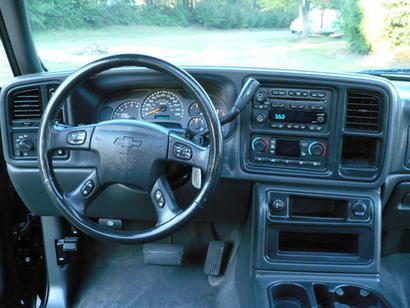 |
| Avalanche interior - Source |
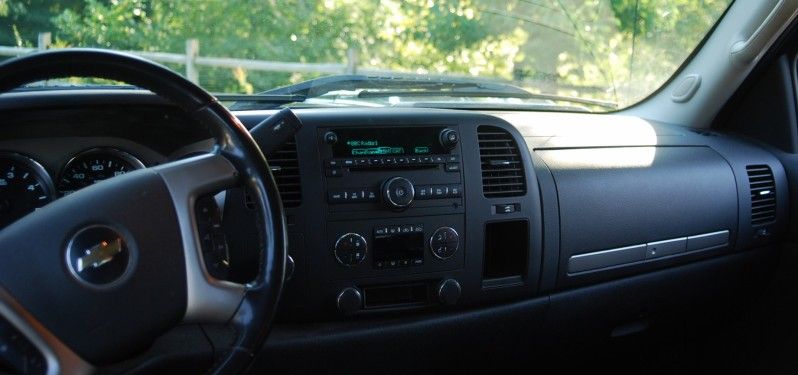 |
| Silverado interior |
In terms of packaging, the Silverado is a truck and not much more. The rear seat folds up which allows for a wide pass-through cargo area and the center console has a few neat storage solutions, but that's the extent of it. However, the Chevy engineers truly out-did themselves when designing the Avalanche's utility specialties. With the debut of the Avalanche, Chevrolet introduced a load of innovation that added substantial amounts of utility to what everyone thought was possible from a pickup. The fact that it can transform its full-size SUV cab (it is based on the Suburban) to full-size eight-foot bed in only a couple of minutes (or seconds, depending on your proficiency) is astonishing to those who haven't seen it done before. Want to wow somebody? Show them how the mid-gate works.
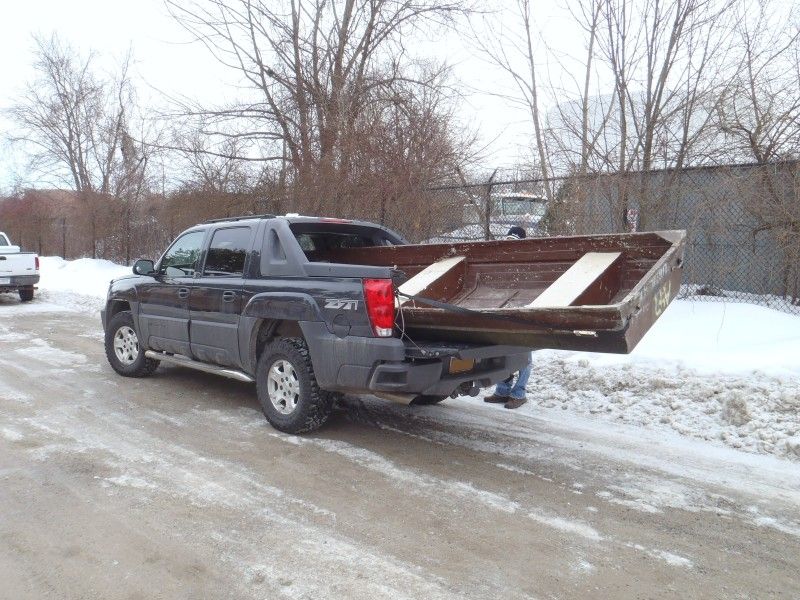  |
| Source |
The ingenious system's main attraction is the "mid-gate," a folding divider between the cab and the bed along with a rear window that can be removed and stored safely on the inside of the previously mentioned divider. This was a huge break-through (pun unintended), and it's a level of engineering ingenuity not usually seen in pickups, let alone those from General Motors in the early 2000's. Add in the three hard panels that cover the bed (as well as the locking tailgate) and you have a fully enclosed and secure cargo spot, perfectly safe for whatever you throw in there. The number of possible configurations is astonishing; any of the panels can remain on the bed while you do whatever you please with the mid-gate (fold the midgate/keep window in place; remove window/keep midgate in place; remove window/fold midgate; leave both in place -- and combine any of these with any assortment of panel assembly that fits your needs). Just knowing you can convert the SUV into a truck provides a peace-of-mind experience; pretty much anything will fit in here, and safely, too. And just for fun, remove the panels, take out the window, drop the midgate and roll the windows down. It's as close as you'll get to a convertible truck this side of an SSR.
 |
| Soure |
 |
| Source |
 |
| Source |
Additionally, there's the "saddle bags," locking, water-tight storage pockets located on the back of the truck between the sheet-metal and the inside of the bed. Road flares, gloves, jumper cables? Throw them in the saddle bags and they'll never get in the way of cab or bed use again. Proof of brilliance? In 2009, Dodge coined the "Ram Box," an exact replica of the saddle bags, 8 years after Chevrolet included it in the original Avalanche.
 |
| The Avalanche's saddle bag - Source |
| Dodge's copycat "Ram Box" - Source |
Now the fun part: engines. Think of the Avalanche's 5.3L V8 (295 HP / 330 lb-ft.) as a local power station: it supplies a lot of power - enough for the town (the driver's use of the truck) - but nothing more. Acceleration is adequate and passing power is, well, passable. If you really need to get by somebody I'd recommend using the Tow/Haul mode which drops the transmission down into a lower gear and then holds it all the way to red line, all while making absolutely glorious sounds. In this application, the biggest redeeming quality about the Chevy small block is the exhaust note. The classic engine, custom pipes and Magnaflow muffler make for a sound that will shake your insides. Close your eyes and listen to the exhaust clip below, what's that sound? A Corvette? A Camaro? A Firebird, GTO, G8? Nope, not even close. That's the Avalanche, and it freakin' roars. Watch the video below for evidence.
(Turn your speakers waaaay up or put in some good headphones. Seriously.)
[No, I don't know if it will pass emissions next year.]
And then there's the Silverado HD's 6.6L Duramax diesel nuclear power plant. 660 lb.-ft. of torque motivate the truck well enough to scare those who aren't accustomed to hard acceleration in something tipping the scales at 7,000+ pounds, and with only an aftermarket intake, the best word to describe the heavyweight's acceleration is "violent." Once a tuner and proper free-flowing exhaust are added the truck should easily keep up with hot hatches and rental V6 Mustangs from a dig. Call it the most terrifying and unexpected of sleepers.
Towing a 3,000-pound trailer, the Avalanche struggles slightly...compared to the 2500HD. It barely breaks a sweat pulling at 65 MPH, but 3rd gear is used more frequently than you'd like (say hello to exhaust drone). Remember that old 4L60E transmission? Two more gears surely would help. Hell, even one more would help, as the 4-speed tranny is outdated and borderline inadequate. The Silverado? It tows as if nothing's there. I've had friends tell me, literally, "it's like there's no trailer and no load...diesel is awesome." Combined with the 6-speed Allison transmission, this truck is the perfect tow rig. A trailer helps to weigh the rear end down just enough to make the ride a little more compliant, and the engine will do anything you want it to. Give a non-diesel driver one quick stint behind the wheel and they're an instant convert.
 The power that the diesel provides is other-worldly compared to the conventional gas engine in the Avalanche. At any speed, in any gear, put your foot down - wait for it, wait for it, (tranny downshifts), wait for it (spooling!), then - holygodballs, what is this thing?! Windows down, the noises coming out from under the hood are like aural crack, and since you're used to acceleration like this coming from a vehicle that sits what seems like 50' closer to the ground and weighing about half as much, it's an absolutely polarizing experience. Stepping hard on the hammer pedal to drop down a few gears and hear the spooling of the 61mm turbo, the whoosh of air, and then feeling the acceleration that shakes the truck as it tries to force the Earth into reverse orbit beneath itself - it's addicting, and something you would never expect from a truck whose reason for existence is towing and hauling.
The power that the diesel provides is other-worldly compared to the conventional gas engine in the Avalanche. At any speed, in any gear, put your foot down - wait for it, wait for it, (tranny downshifts), wait for it (spooling!), then - holygodballs, what is this thing?! Windows down, the noises coming out from under the hood are like aural crack, and since you're used to acceleration like this coming from a vehicle that sits what seems like 50' closer to the ground and weighing about half as much, it's an absolutely polarizing experience. Stepping hard on the hammer pedal to drop down a few gears and hear the spooling of the 61mm turbo, the whoosh of air, and then feeling the acceleration that shakes the truck as it tries to force the Earth into reverse orbit beneath itself - it's addicting, and something you would never expect from a truck whose reason for existence is towing and hauling.Complain all you want about diesel fuel being hard to find but the power advantages and tuneability of the engine make it completely worth the sacrifice. Hell, towing a trailer and not having to downshift on even the steepest of highway hills makes the initial cost versus a gas engine seem worth it. There's reasons why diesels have such a massive fan-base, and the Duramax makes it easy to understand.
The extra power not only makes the 2500HD more fun but a little safer as well. Coming down an entrance ramp and need to make a fast pass around that 18-wheeler that's about to block your lane? Not a problem, step on the gas and it's done. Climbing a rough hill with a trailer to get to the parking lot at an ATV trail? The transmission and ability to select gears are more than up for the job. I wouldn't call the Avalanche unsafe, but the diesel's power and torque give you the mindset that you can literally overpower any challenge, be it a slow-moving vehicle in the left lane or a hill that would put lesser trucks' thermometers in the red zone.
However, ride quality is a completely different game. Bumps, potholes, and rough roads are the Silverado's worst nightmare. Seriously, avoid broken roads at all costs. Yet this is the Northeast, and driving on poorly maintained pavement is a fact of life. The ride quality (or lack thereof) has to be expected though considering the Silverado's leaf springs out back, stiff front suspension and the overall mass it carries around. The Avalanche, on the other hand, does fairly well in daily driving (as it should; remember, it's a Suburban under the skin).
Another difference is the four-wheel-drive systems in each truck. The Silverado uses a knob to switch from 2WD to 4WD to 4WD Low that is located on the right side of the steering wheel, where it is easy to find and equally easy to use. The Avalanche offers one more option, 4WD Auto, which enables the truck to use an all-wheel-drive style system to sense slip and engage 4WD on its own. To be honest, I have never used this feature in four years of ownership, but it's a good to have if a less experienced/confident driver was to be behind the wheel in less-than-sure road conditions. Unlike the Silverado, the Avalanche uses buttons to the left of the steering wheel for selection of how many corners put power to the ground, and this setup works just fine but is a little less logical in an ergonomic sense.
On a day-to-day basis, the Avalanche is definitely the easier of the two live with. The 19" difference in length, the turning radius, the greater availability of regular unleaded fuel, and the general driving characteristics make it the clear choice if you don't need a Heavy Duty pickup daily. Gas mileage is a wash because while the 2500HD can go further on a gallon, its liquid propulsion costs more and thus they're just about even in terms of cost-per-mile. A note on visibility: you can see everything looking out of the Silverado, but the Avalanche's rear
So all things considered, let's call the Silverado a sledgehammer; it's strong and extremely useful in splitting wood or breaking heavy objects - but pushing it outside of its element is asking a little too much. The Avalanche is more of a Swiss Army Knife, a tool good at a wide variety of things but not spectacular at anything in particular. What it does do best is combine the utility of a large selection of tools and applications into one just-the-right-size package. Let's see a sledgehammer break out its screwdriver or file attachment, or the Swiss Army Knife split wood. But hang on a second, this wasn't about picking the better truck but exploring how different two full-size Americans pickups built by the same manufacturer can be. Pointless? Sort of. But then again, so is having a workshop filled with only one tool. Chevrolet did one hell of a job differentiating two of their full-size pickups, and I can honestly say the engineers did a commendable job overall of allowing these two trucks to exist and be sold under the same brand name with enough of a difference between them for each to make a compelling point for itself. Well done, Chevy - you successfully filled your stable with two different breeds of the same species, and made them both worthy of ownership.
But the end of the day, which truck would I want to own? The packaging of the Avalanche is near perfect: a plethora of utility, a relatively conservative size, and a look all its own. It was the pickup/SUV love-child that literally came out of nowhere, but one that Chevy executed damn-near flawlessly. Yet there's just that "something" missing, something the Silverado has, that the Avalanche cannot compete with; that "something" takes form in the 6.6L Duramax turbo-diesel engine. This alone is reason enough to love the Silverado; call it the sole advantage over the Avalanche (all of its added benefits - towing, hauling, etc. - are in some way related to it), but it's that good. Going from driving the Silverado to driving the Avalanche is a disappointment whenever you have to accelerate, especially with the sound of a Corvette echoing throughout cabin and the truck just not having enough bite to back up its bark. Deciding which to own is nearly impossible; it's like deciding to marry a girl who is stunningly beautiful with a decent personality or one that has a perfect personality and isn't all that exciting to look at. The Silverado definitely isn't the beauty queen but it sure has a hell of a personality; if I were to buy a new truck, this is the one I'd want to come home to every day.
Bottom line: what I've discovered through years of having an Avalanche and a Silverado in the same household is that it is very possible for a company to offer multiple trucks without having them step on each others' toes. The Avalanche and Silverado exist for entirely different reasons and both do their respective job incredibly. Unfortunately, 2013 is the end of the production run for the Avalanche as lack of demand will be sending it to the great car crusher in the sky, but the Silverado will soldier on for another generation. Long live the Chevy truck, whatever form it takes.
So for everyone else, as expected, it comes down to needs and wants. Need a truck bed but don't want a monstrous full-size Heavy Duty pickup? Buy an Avalanche and walk away happy with its SUV-like ride, easy-to-use utility and storage capabilities. Want power? Buy the diesel Silverado. Need a truck that can tow and haul with the best of them? Obviously that's not what the Avalanche was designed for, but if you're a weekend warrior towing a light ATV trailer and need a bed to throw muddy gear in, the Avy is right for you. If you need more of a "truck" though, go buy a Silverado, install an aftermarket intake, performance chip and exhaust and bask in the glory of the Duramax. Accept its shortcomings, learn to tolerate its ride quality, pretend the interior is nicer and go surprise a Mustang at a stop light. End of story.
But what about in a perfect world? A utopia where the best of everything can come together to make the world's best pickup truck, with the backbone of an Avalanche and the heart of a Duramax Silverado? This, my friends, would be truck heaven. Power, comfort, and utility, all packaged in one controversially-styled yet totally badass looking truck that's a hoot to drive and a true work companion when it's needed. Absolute perfection in the truck world. Thank god for the aftermarket and for shops willing to do engine transplants, otherwise a combination this good would only exist in truck lovers' imaginations. Hypothetically speaking, what would I do with the Avalanche if the engine were to die long before the truck itself, replace it with another small-block Chevy motor? That would be like giving Superman a human's heart after it stops pumping blood. There's just something about the sound of that turbo spooling that I can't stop dreaming about...now that would be the sole tool to replace all of the inferior tools wasting space in my toolshed.
- Ross B.
Feel free to e-mail with comments, questions and/or suggestions!
2005 Chevrolet Avalanche Z71 4x4
Daystar leveling kit, HD roof lights, Airaid intake, custom exhaust pipes w/Magnaflow muffler, 285/70-R17 Goodyear Wrangler Duratrac tires, pre-runner style light bar w/Hella lights, black bowtie, CB & antenna, amber running lights, front lip removed, bumper-mounted reverse lights
2007 Chevrolet Silverado 2500HD 4x4 LT w/Duramax diesel
Banks intake w/"Super Scoop," Hummer H2 wheels, 295/70-R17 Nitto Terra Grappler tires
Credit for all un-sourced photos: Ross & Spencer B.

